Abstract
In Exp. I three pigeons were trained on a two-component chain schedule. Responding on a 1-min variable-interval schedule in the initial component led to a sequence of two fixed-interval schedules in the terminal component. The rate of reinforcement in the terminal component was kept constant while the values of the two fixed intervals were varied. Three combinations of fixed-interval schedules were studied, FI 0.25, FI 1.75 (minutes) or FI 1.00, FI 1.00, or FI 1.75, FI 0.25. The rate for each subject declined in the initial component as the value of the first fixed interval was increased. Experiment II was conducted to assess the role of the second fixed-interval schedule in the terminal component in determining the rate of responding in the initial component. For each chain schedule the rate of responding in the initial component was determined both with and without the second of the sequence of fixed intervals. In all three cases the rate of responding in the initial component decreased when the second fixed interval was removed. Increasing the first fixed interval in Exp. I had a greater effect on variable-interval performance than did the removal of the second fixed interval in Exp. II.
Full text
PDF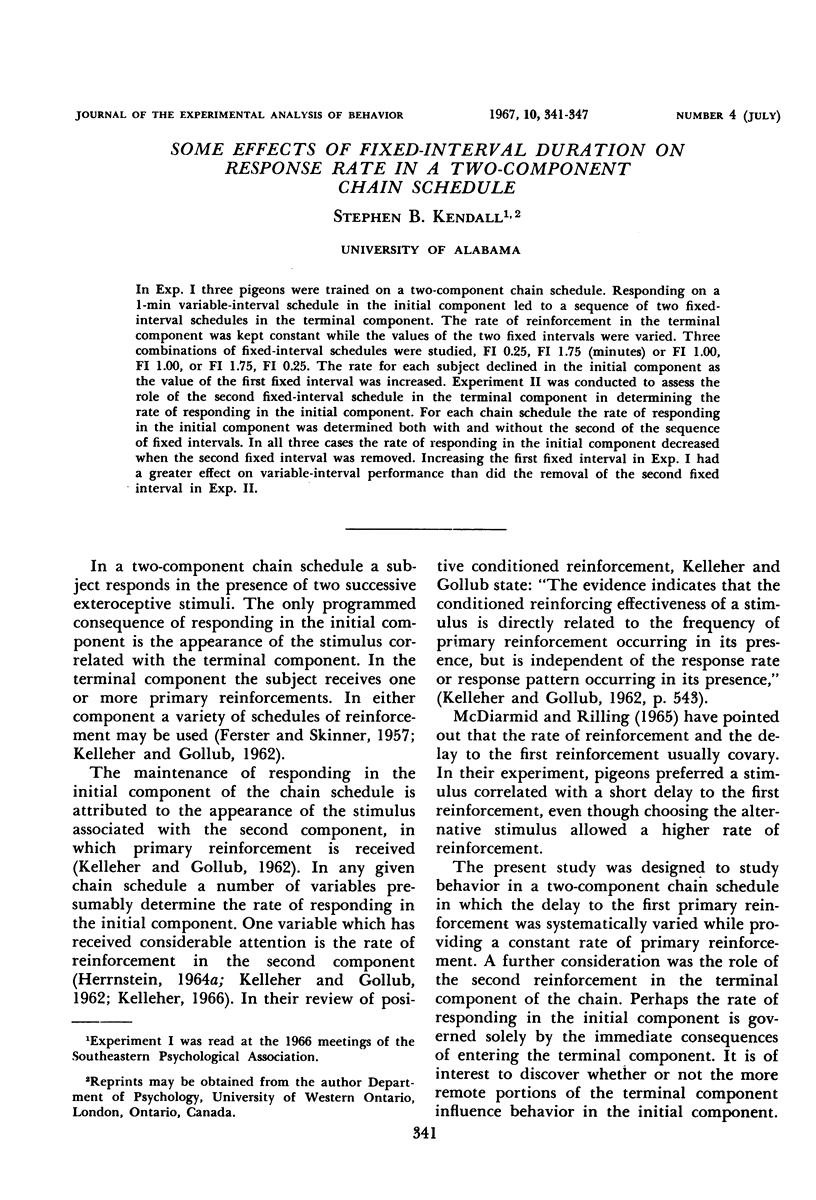
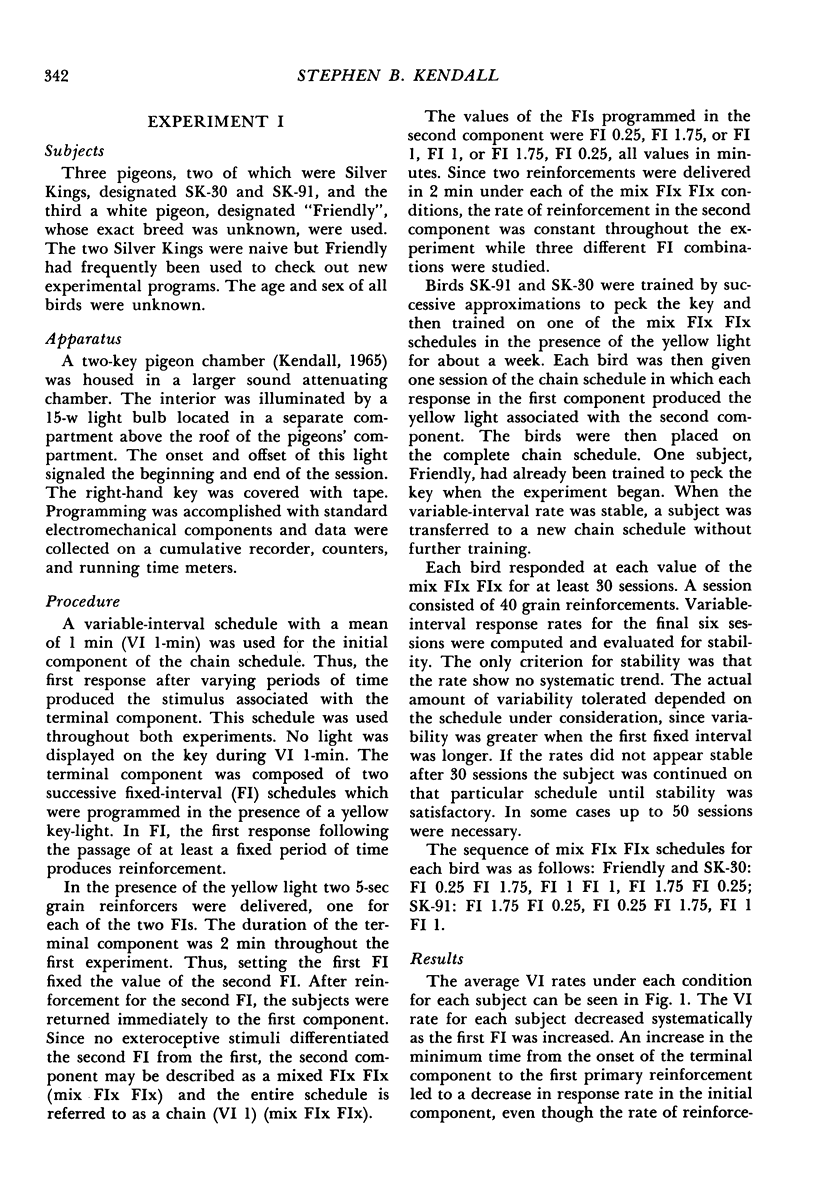
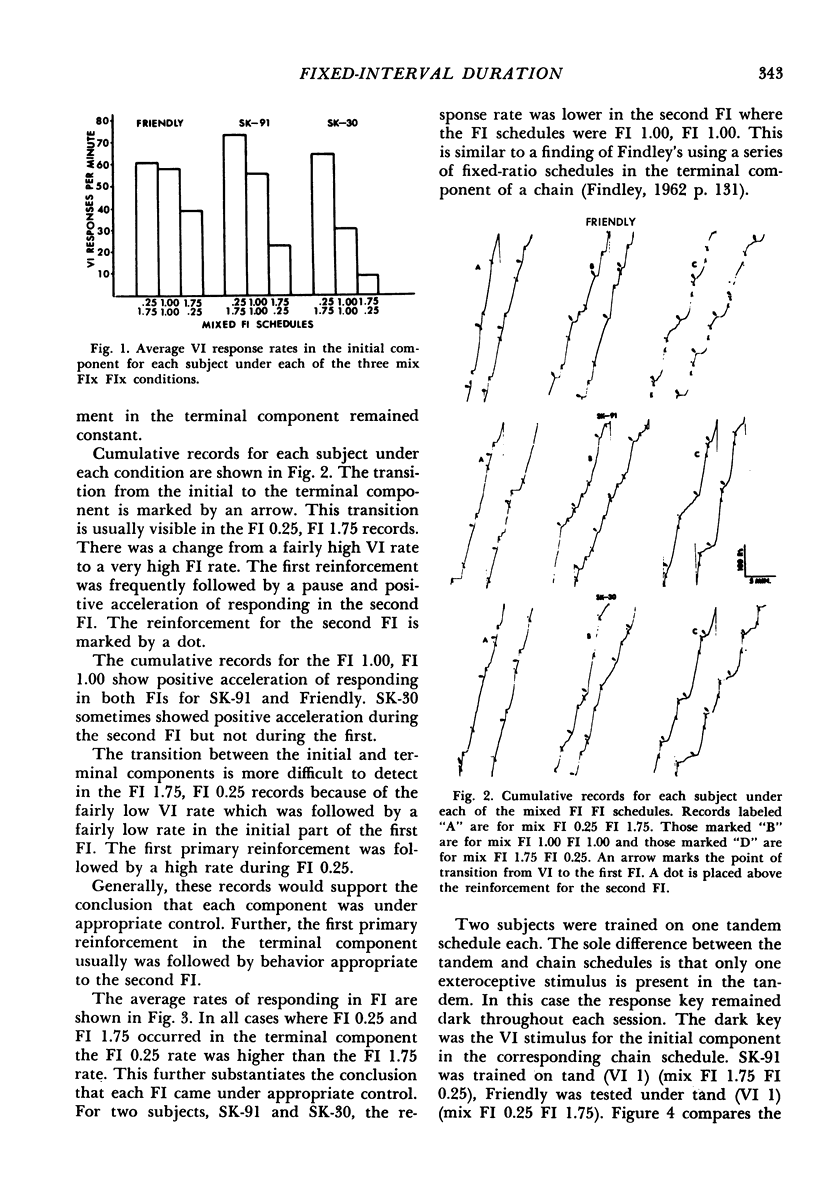
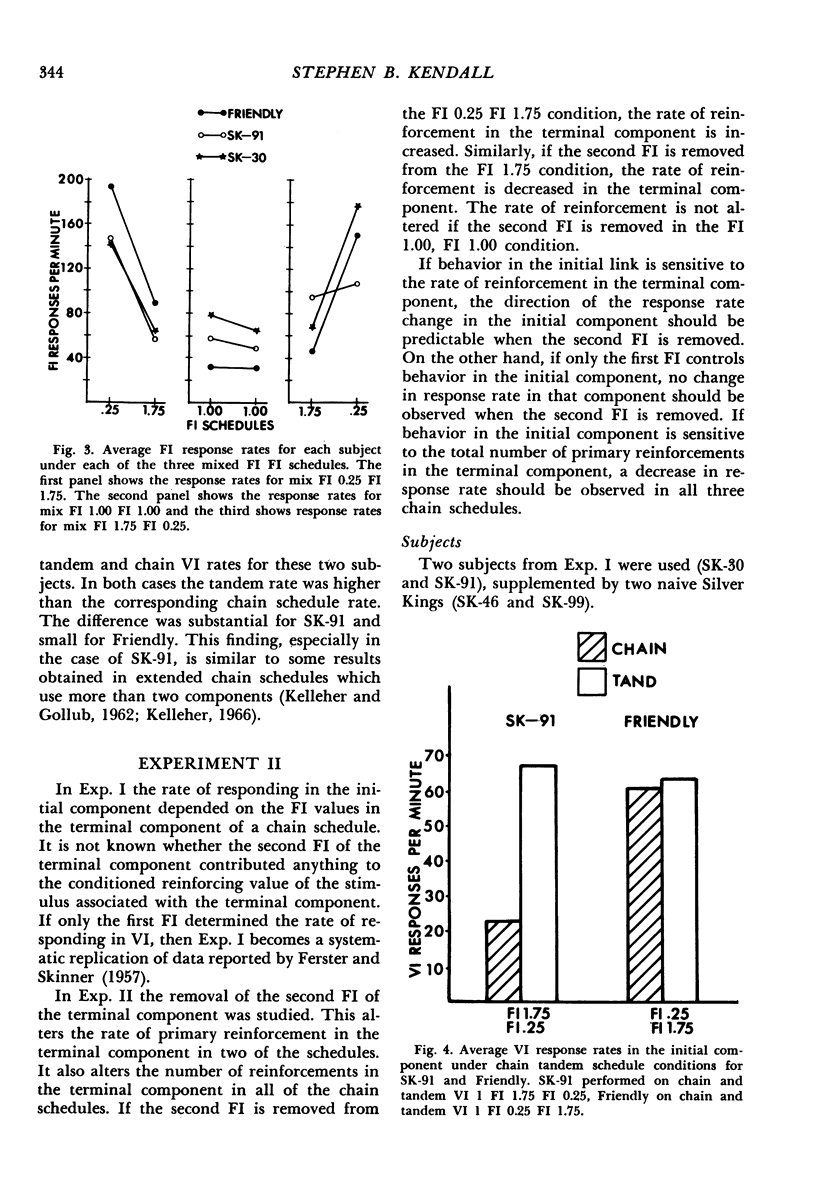
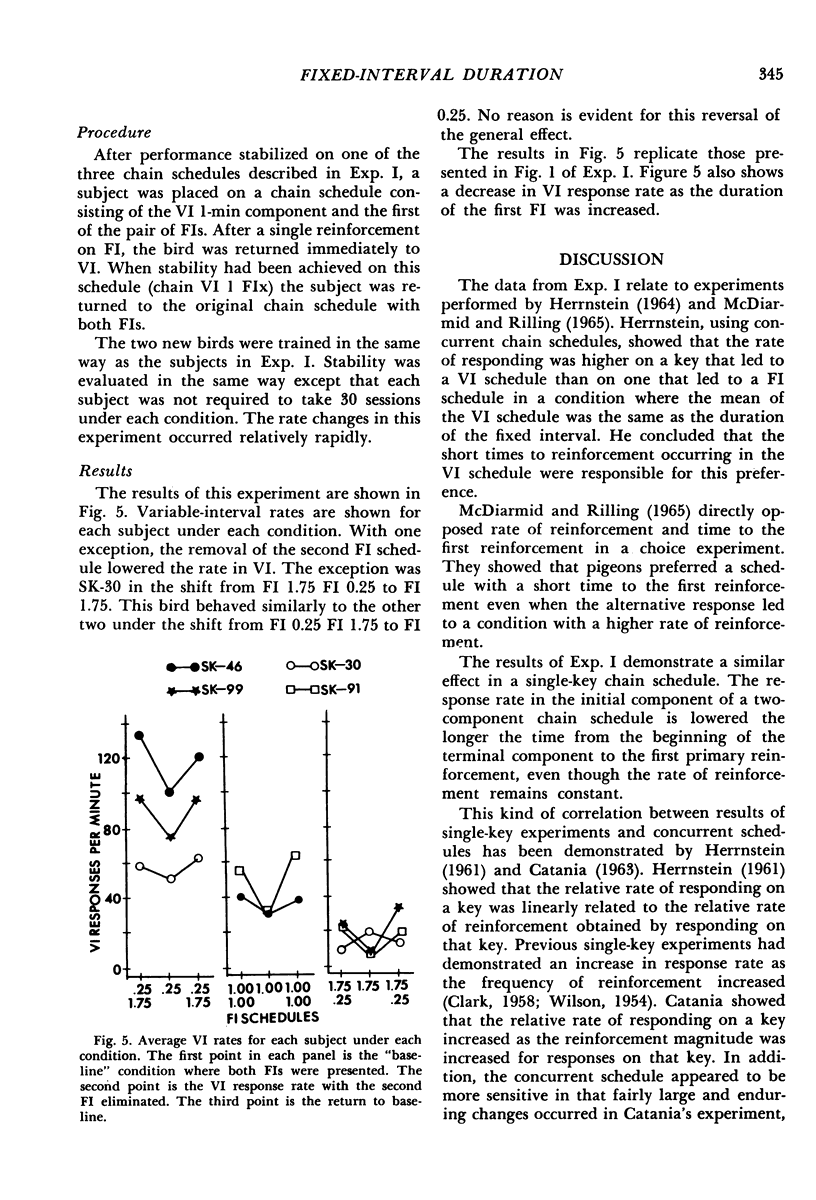
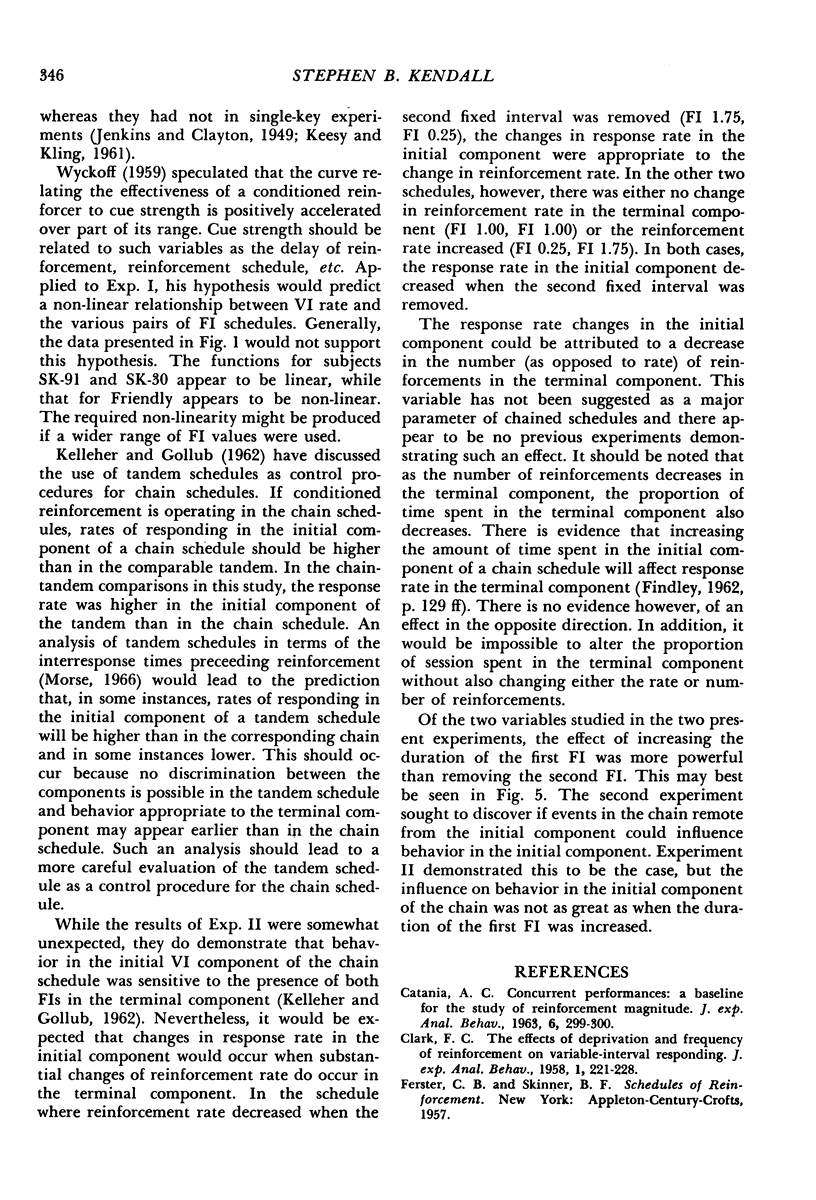
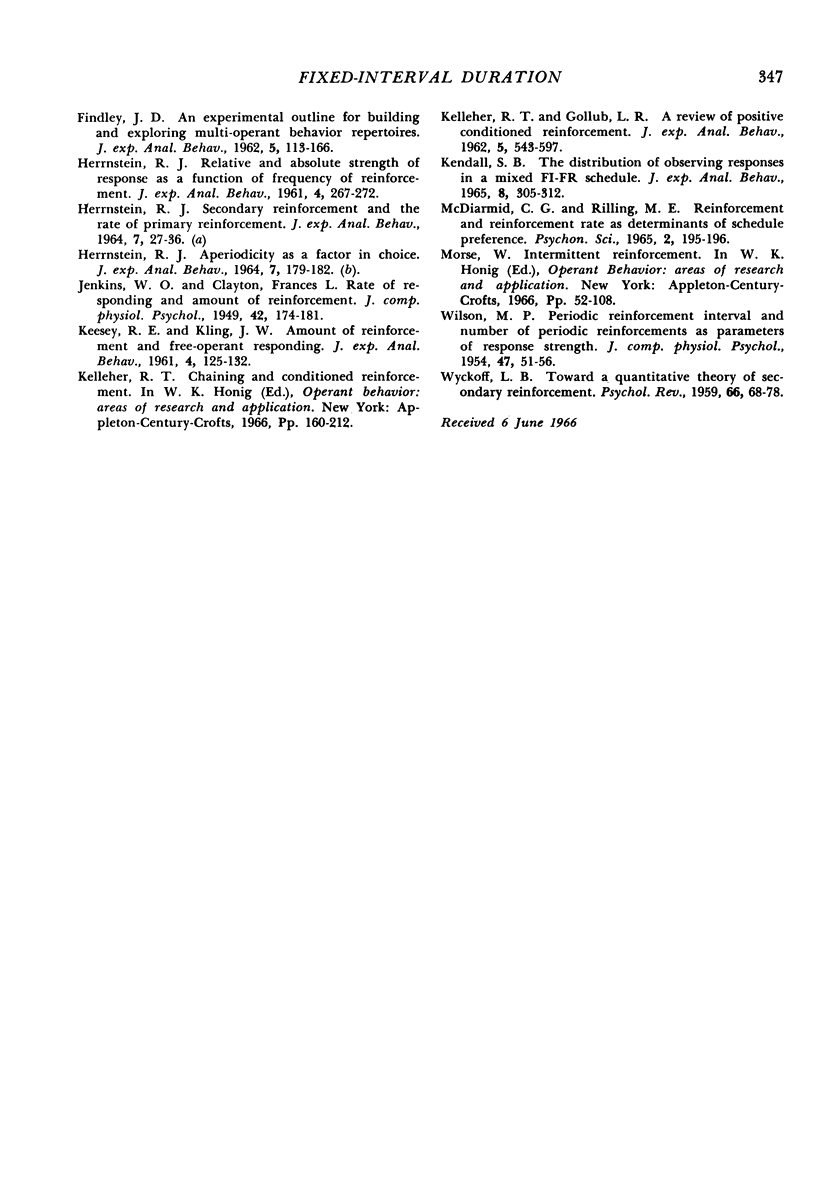
Selected References
These references are in PubMed. This may not be the complete list of references from this article.
- CATANIA A. C. Concurrent performances: a baseline for the study of reinforcement magnitude. J Exp Anal Behav. 1963 Apr;6:299–300. doi: 10.1901/jeab.1963.6-299. [DOI] [PMC free article] [PubMed] [Google Scholar]
- Clark F. C. The effect of deprivation and frequency of reinforcement on variable-interval responding. J Exp Anal Behav. 1958 Aug;1(3):221–228. doi: 10.1901/jeab.1958.1-221. [DOI] [PMC free article] [PubMed] [Google Scholar]
- FINDLEY J. D. An experimental outline for building and exploring multi-operant behavior repertoires. J Exp Anal Behav. 1962 Jan;5(Suppl):113–166. doi: 10.1901/jeab.1962.5-s113. [DOI] [PMC free article] [PubMed] [Google Scholar]
- HERRNSTEIN R. J. APERIODICITY AS A FACTOR IN CHOICE. J Exp Anal Behav. 1964 Mar;7:179–182. doi: 10.1901/jeab.1964.7-179. [DOI] [PMC free article] [PubMed] [Google Scholar]
- HERRNSTEIN R. J. Relative and absolute strength of response as a function of frequency of reinforcement. J Exp Anal Behav. 1961 Jul;4:267–272. doi: 10.1901/jeab.1961.4-267. [DOI] [PMC free article] [PubMed] [Google Scholar]
- KEESEY R. E., KLING J. W. Amount of reinforcement and free-operant responding. J Exp Anal Behav. 1961 Apr;4:125–132. doi: 10.1901/jeab.1961.4-125. [DOI] [PMC free article] [PubMed] [Google Scholar]
- KELLEHER R. T., GOLLUB L. R. A review of positive conditioned reinforcement. J Exp Anal Behav. 1962 Oct;5:543–597. doi: 10.1901/jeab.1962.5-s543. [DOI] [PMC free article] [PubMed] [Google Scholar]
- KENDALL S. B. THE DISTRIBUTION OF OBSERVING RESPONSES IN A MIXED FI-FR SCHEDULE. J Exp Anal Behav. 1965 Sep;8:305–312. doi: 10.1901/jeab.1965.8-305. [DOI] [PMC free article] [PubMed] [Google Scholar]
- WILSON M. P. Periodic reinforcement interval and number of periodic reinforcements as parameters of response strength. J Comp Physiol Psychol. 1954 Feb;47(1):51–56. doi: 10.1037/h0057224. [DOI] [PubMed] [Google Scholar]
- WYCKOFF L. B. Toward a quantitative theory of secondary reinforcement. Psychol Rev. 1959 Jan;66(1):68–78. doi: 10.1037/h0046882. [DOI] [PubMed] [Google Scholar]


